“Killers of the Flower Moon” Cinematographer Rodrigo Prieto Illuminates Martin Scorsese’s Twisted Tale
When I connected with Rodrigo Prieto for our video interview, as one might imagine a cinematographer to do, he was perfectly lit in a warm amber glow, perhaps a nod to a fire motif visually laced in Martin Scorese’s Killers of the Flower Moon – a love story between Mollie Kyle (Lily Gladstone) and Ernest Burkhart (Leonardo DiCaprio) wrapped in the travesty the Osage Nation faced during the 1920s.
Having spoken previously with the Mexican native as far back as Argo (2012), the Ben Affleck best picture winner about the Iran hostage crisis in 1979, Prieto chimed he was unable to see me. I had the unfortunate news that the webcam on my laptop stopped working, an irony talking with a cameraman that did not go unnoticed, at least by me.
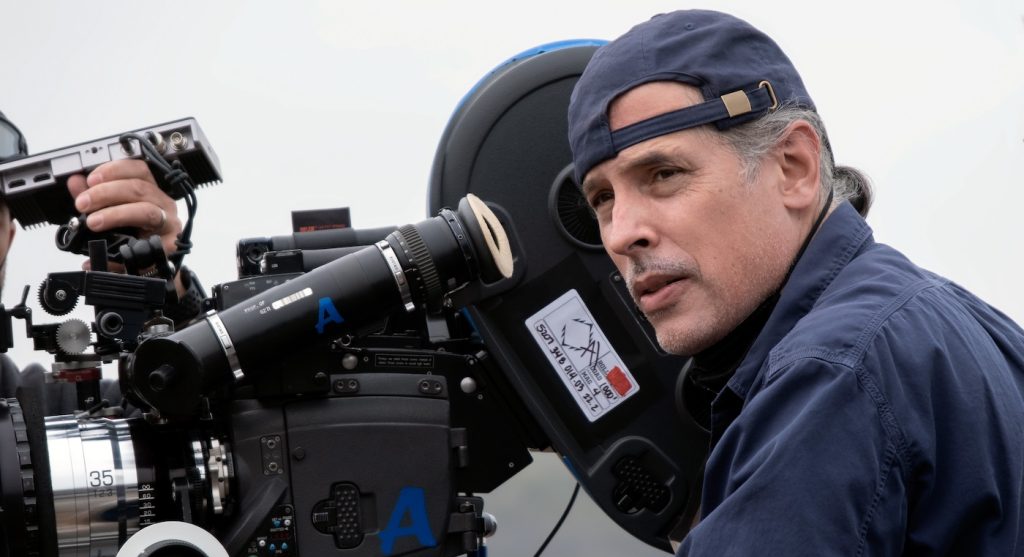
We started the conversation with a compliment an industry colleague and I both shared following a screening in which we felt Killers was Prieto’s best lighting work he’s ever done. That’s considering the moodiness of Spike Lee’s 25th Hour, Alejandro Iñárritu’s 21 Grams, and the four previous Scorsese collabs: The Wolf of Wall Street (2013), The Audition (2015), Silence (2016), and The Irishman (2019). Brushing the comment aside, the cinematographer modestly suggested Killers of the Flower Moon “felt like a final exam in a way.”
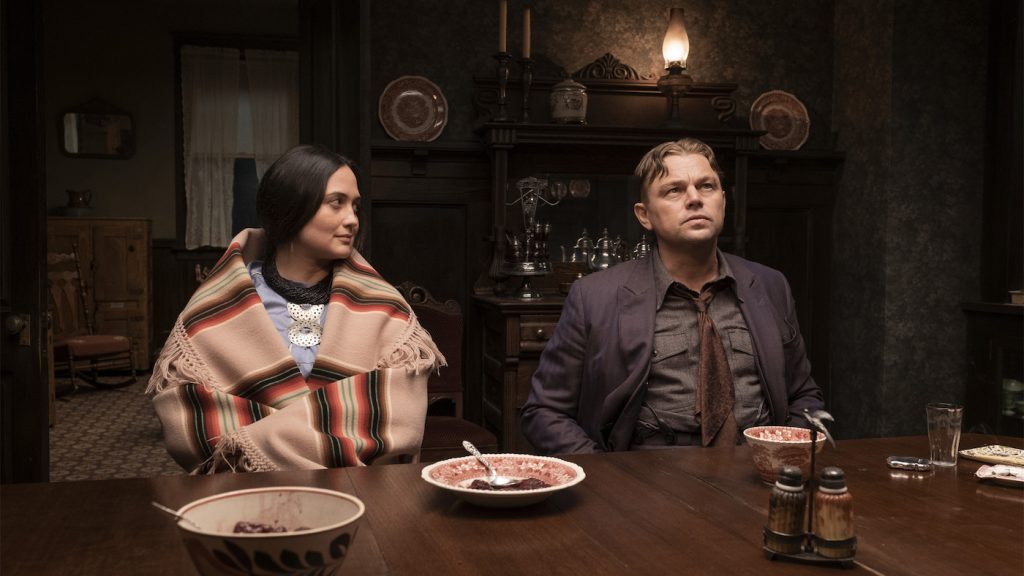
“There was so much that I had to apply that I have learned in the past. So many different challenges in terms of situation, scale of scenes, managing the time of day to shoot, and leaving the actors and Marty enough time to not make them feel overwhelmed,” he continues. “I used all my bag of tricks, but at the same, I always approach every movie like it’s the first time I’m making a movie.”
Even with years of shorthand, Prieto admits he initially gets nervous when the two work together, and he approaches each project with an innocence in terms of “figuring it out.” For Killers, as well as their previous films, the pair discusses the emotional intent of each scene, and Prieto then translates those thoughts into visual storytelling.
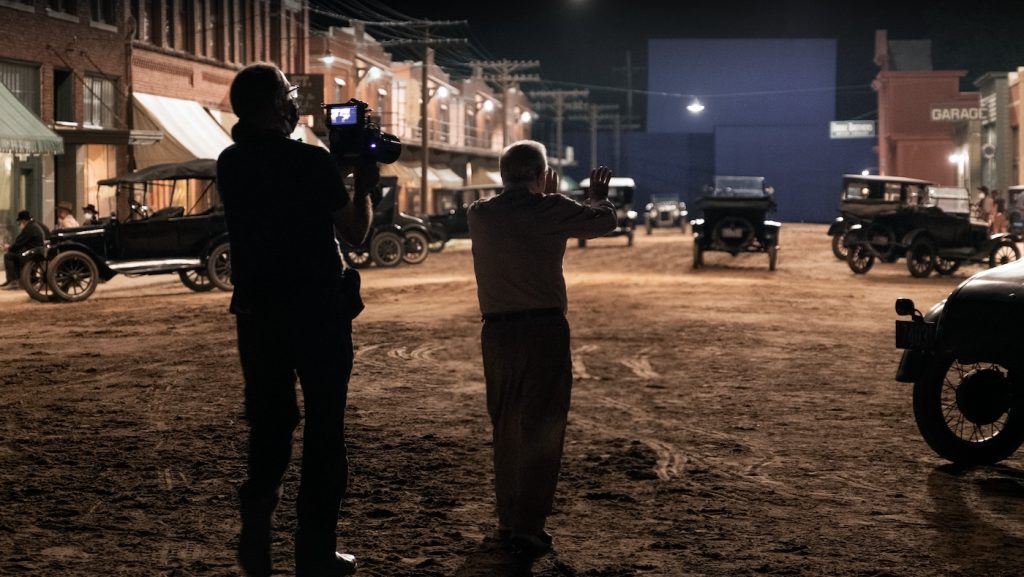
Technically, the cinematographer blended celluloid and digital for the ambitious Western that catalogs the disastrous (and very true) events the Osage were victims of during 1920s Oklahoma. Arricam LT and Arricam ST cameras were paired with Kodak 5207 film for daytime exteriors, and Kodak 5219 was used for night sequences. Additionally, a Sony Venice was deployed for its low-light sensitivity for certain night sequences. “I knew that we would do several of the scenes ‘dusk for night’ [the process of shooting at dusk to stand in for night], and it’s such a short period of time I needed to make sure we could finish those scenes at dusk,” he says. “I felt with a film-negative camera it would have been challenging. The Sony Venice extended that time for us.” Anamorphic Panavision T-series lenses were detuned to reduce sharpness and add warmer flares. For some of the victim scenes, an anamorphic Petzval lens was used to distort the edges of the frame, while a vintage Bell & Howard hand-crank camera (owned by Scorsese) created the black-and-white newsreel footage in the film.
In lighting scenes, Prieto considered how the Osage lived during the period. “For some night scenes, instead of creating moonlight, I used industrial cranes with an array of light bulbs in 30 x 20 frames for the dance scene in the main street in Fairfax,” he explains. “These light bulbs emulated how the Osage lit their own streets because they were scared of what people were doing. They put these ‘fraid lights’ strung between two poles with wire and light bulbs. I used that inspiration for the night lighting.”
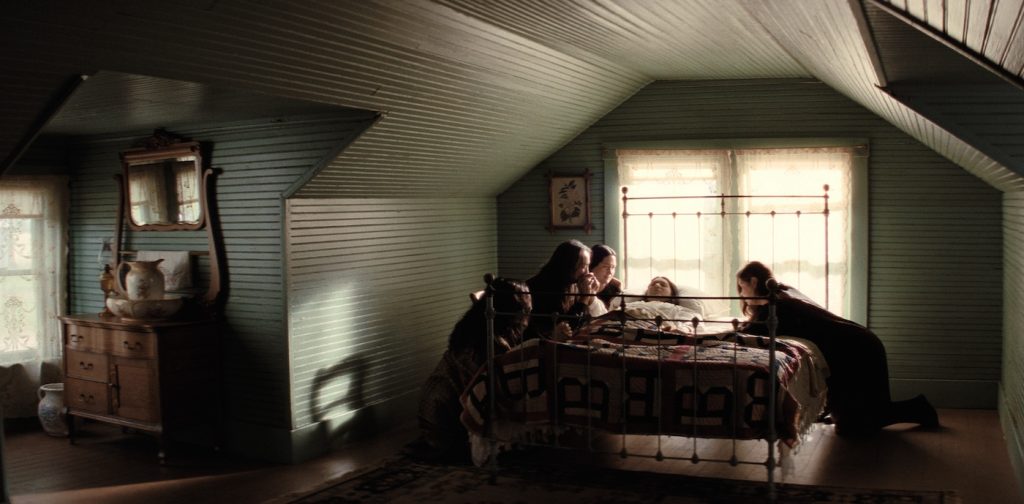
The sun was also an important element to the look of Killers of the Flower Moon. In one early sequence, the Osage are being administered a vaccine, and Prieto created a hotspot of sunlight, akin to a spotlight, in the middle of the room from a hole in the ceiling. The light bounces from the floor and brightens the room in what is a very subdued moment. The cinematographer brought the same element to a scene where the Osage are discussing if they should send someone to Washington DC to ask the President to send someone to find out what’s mysteriously happening to them. In the room, a big circle of light can be seen on the ground, bouncing to the faces of the Osage. The motif illuminates several other moments, for instance, during Mollie’s (Lily Gladstone) prayers and the somber burial ceremonies. “The Osage are very aware of the sun,” says Prieto. “Many of their ceremonies are based on the sun’s position. Even their villages are lined up with the orientation of the travel of the sun, which is something, of course, DPs are aware of – how the sun travels – so I felt I identified in a way.”
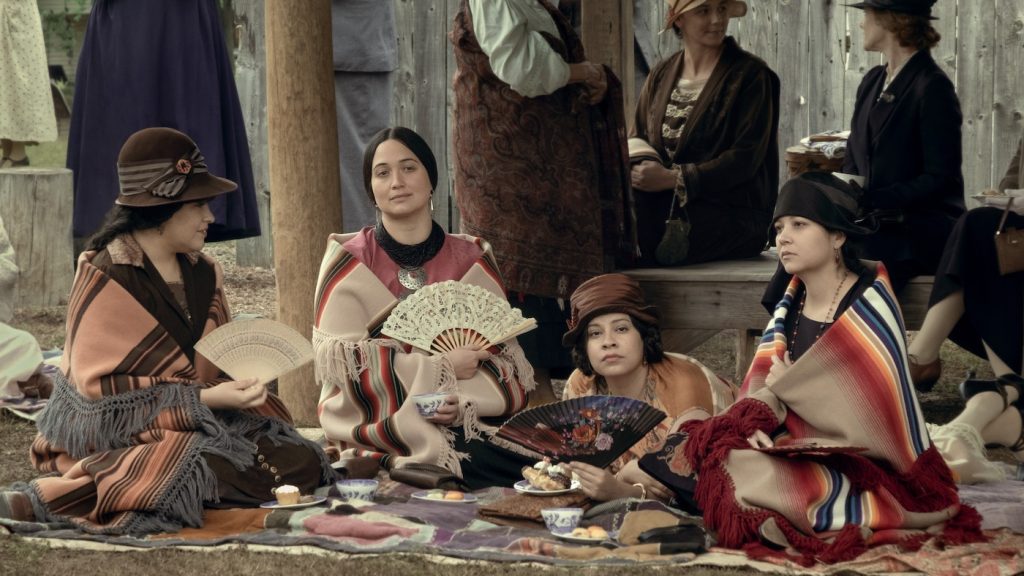
For scenes inside Mollie’s home and William Hale’s (Ernest’s uncle played by Robert De Niro) cattle ranch, which were complete builds by production designer Jack Fisk, were naturally lit through windows. Prieto also added layers of ND to the windows of Hale’s home so that audiences could see the cows grazing outside. A subtle nod to his wealth. Prieto says he wanted the feeling of the film to evolve into a harsher, more surreal look with darker shadows as things begin to worsen for the Osage.
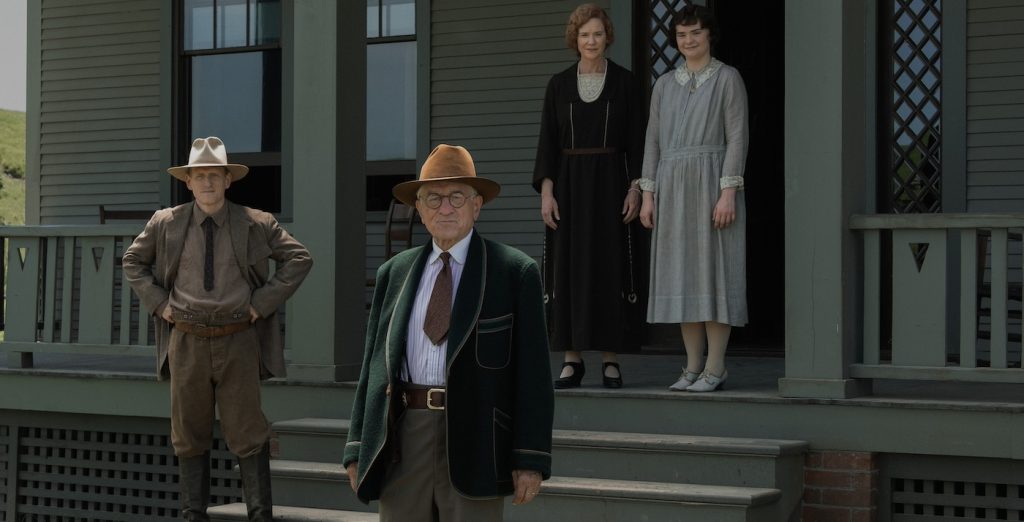
Color played a vital role as Prieto separated the Osage from those impacting their lives. “The color of film negative was important as it has a deeper color depth, so I thought that was better to represent the nature around the Osage,” he says. The deeper colors of the Osage eventually evolve into an emulation of ENR, a low saturation high contrast look, following an explosive moment in the Osage community. For scenes with Ernest and Hale, an autochrome emulation created a less saturated, muted color palette.
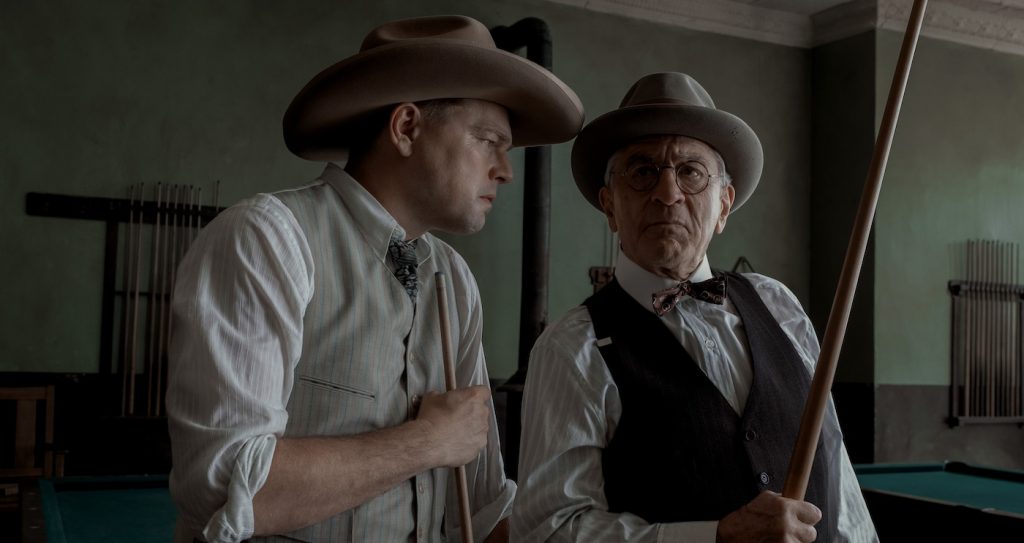
Killers of the Flower Moon was a culmination of techniques for Prieto – the cinematographer considering everything to create an authentic visual story with his frequent collaborator Martin Scorsese. Maybe next time, I should consider a webcam alternative.
Killers of the Flower Moon opens in theaters on October 20, 2023.
For more on Killers of the Flower Moon, check out these stories:
How Osage Tradition Influenced the Hair & Makeup in “Killers of the Flower Moon”
“Killers of the Flower Moon” Costume Designer Jacqueline West on the Power of the Osage Blanket
How “Killers of the Flower Moon” Production Designer Jack Fisk Created 1920s Oklahoma
Featured image: Leonardo DiCaprio is Ernest Burkhart and Tantoo Cardinal is Lizzie Q. Courtesy Apple TV+



